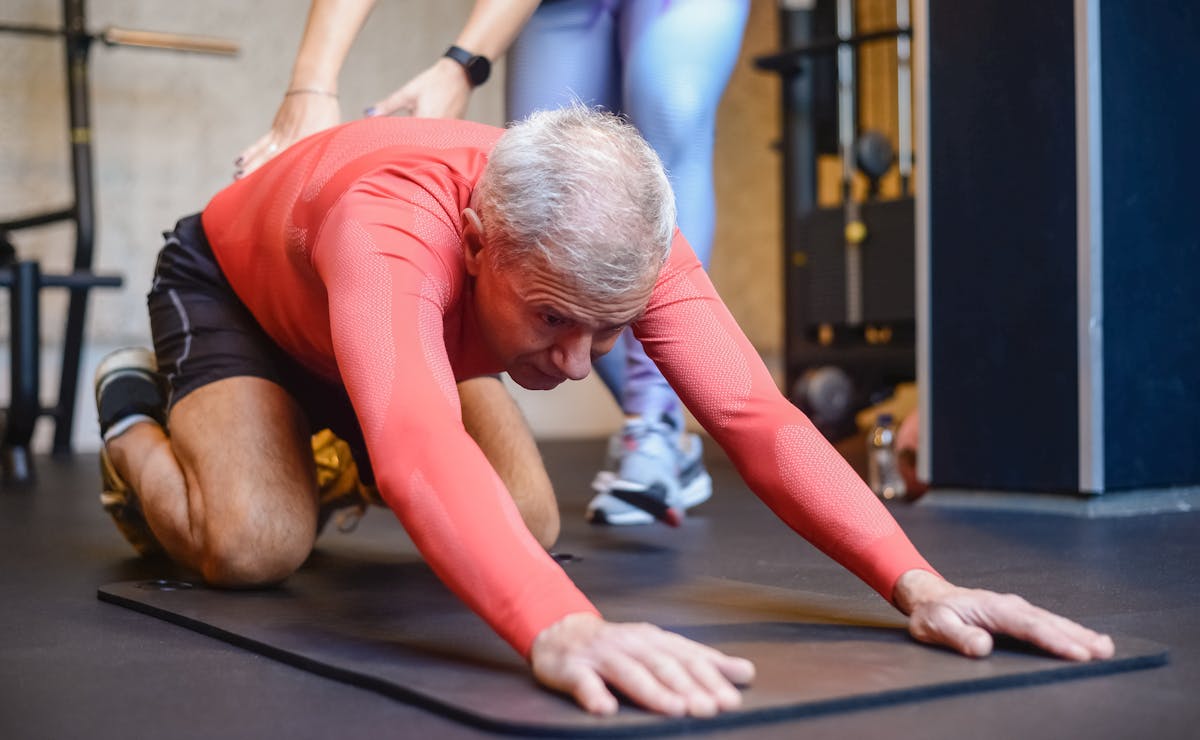Given that the loss of muscle mass resulting from the aging of the body tends to lower bone density and metabolism, Pilates for the elderly offers benefits in reducing back and joint pain especially.
These physical changes are accompanied by emotional ones; after all, it is difficult to have self-esteem when the body fails to help with daily chores.
Thus, regardless of the practitioner’s physical state or pathologies, this practice is a great companion for the elderly since the exercises are easy to conduct and free of contraindications.
Benefits of Pilates for Seniors
The benefits of Pilates for seniors are countless, including physical aspects, such as reducing muscle pain, flexibility and improving balance, as well as emotional benefits, such as improving sleep quality, relieving stress and anxiety and increasing self-esteem.
Although the exercise is suitable for all ages, for the elderly it is one of the finest choices as the low-impact nature of the activities guarantees safety for this age range.
Furthermore customized to the needs of the practitioner, the workouts concentrate on coordination and muscle strengthening, thereby improving the preservation of muscular mass and cardiovascular conditioning.
Pilates also helps to avoid urine and faecal incontinence since the method tones the deep muscles regulating these processes.
Check out the benefits
- Increased bone density
- Pain relief
- Reduces the possibility of injuries
- Greater flexibility and mobility
- Increased respiratory and cardiovascular capacity
- Improves walking speed
- Maintains body weight
- Strengthens external and internal muscles
- Improves body posture
- Increases balance
- Reduces cortisol levels – the hormone responsible for stress and anxiety
- Increased production of serotonin, endorphin, dopamine and oxytocin – happiness hormones
- Improves sleep quality
- Increases energy
Finally, know that daily limitations such as standing, sitting, and tying your shoes can be improved with practice.
Pilates exercises for seniors
Even though they have low impact, the exercises need to be performed under the supervision of a professional, as incorrect execution can harm the practitioner, increasing muscle pain and causing injuries .
That said, check out the examples of three basic exercises performed by seniors with professional supervision.
Pilates exercises on the chair
The exercises performed on the chair are intended for stretching and can be performed at home, as long as, of course, you are accompanied.
The practice is carried out with the aid of a heavy chair to ensure the safety of the elderly person, who must sit upright, maintaining a distance of one hand’s breadth from the back of the chair.
Pilates floor exercises
In addition to helping with stretching , floor exercises tend to increase the practitioner’s muscular strength and help improve balance.
The following example should be assisted by a professional who can help the elderly person maintain the position safely, to avoid falls and possible injuries.
- With the help of a professional, the elderly person should get on their hands and knees on the floor, in a crawling position.
- Next, the practitioner must raise the left arm in front of the body and lift the right leg off the floor, stretching it backwards, as suggested in the image above.
- The elderly person must maintain a fixed point to help with balance.
- However, it is necessary to respect the body’s limits and, if you are unable to hold for 15 seconds, it is advisable to reduce the time, always taking into account the practitioner’s safety.
Pilates exercises with a ball
Exercises with the ball aim to strengthen the internal muscles and aid in balance. However, it is important that the professional knows the practitioner and is aware of their body resistance, so that the activity can be performed safely.
It is worth noting that there are numerous activities with the ball that can be reproduced by elderly people, for other types of purposes, including stretching.
This is just an example that is easy to execute and that also requires the use of an elastic band suitable for physical exercises.
- You will need to use a special Pilates ball that is safe and resistant to the weight of an adult, as well as a specific elastic band for physical exercise that will not break easily.
- The practitioner must sit on the ball, keeping their spine straight and their feet firmly on the floor.
- It is important that your posture is as straight as possible, respecting the 90 degree angle of your legs.
- Each hand should hold one end of the elastic and the elderly person will need to open their arms, stretching the material as far as they can.
- The spine should remain straight and the arms should maintain a straight line as well.
- This way the muscles will be strengthened, as well as the shoulder.
- Keep the material a reasonable distance from your face to avoid accidents.
Contraindications of Pilates for the elderly
There are no contraindications to Pilates in old age since the activity provides for the practice to be performed irrespective of age or physical status.
Even if an elderly individual has some usual pathology in old age, including cardiovascular disease, hypertension and spinal issues, they can still practice Pilates exercises.
Nevertheless, it is necessary to again stress the need for professional supervision for proper and safe practice.
It is important to remember that the benefits mentioned throughout this article are acquired through a continuous Pilates routine developed by a professional in the field.
Pilates or weight training for seniors?
First, you need to understand the purpose of each physical exercise: Pilates is recommended for elderly people who have lower back pain and are looking to improve mobility. Weight training is recommended for those whose goal is to lose weight and gain lean muscle mass.
It is possible to alleviate joint and muscle pain through weight training, however, to do this, it is necessary to lift weights and do more complex exercises, which may not be interesting for certain ages.
Pilates, in turn, can also help with weight loss and lean mass gain, but for this, it will be necessary to have the support of a nutritionist, so that together with the physiotherapist they can develop exercises that, combined with nutrition, bring the desired results.

